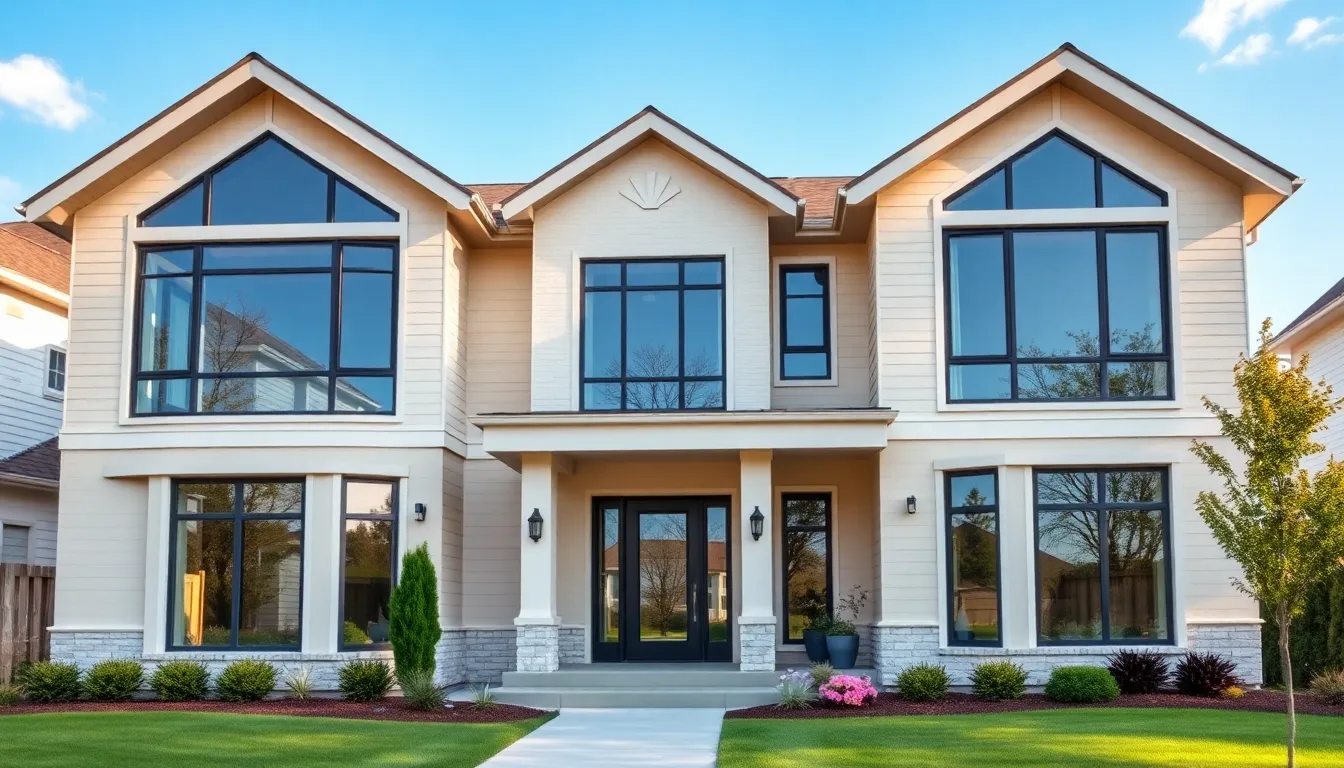Home window tinting isn’t just about looking cool; it’s about turning your living space into a cozy sanctuary. Imagine basking in natural light without feeling like you’re on a sunbaked beach. But before diving headfirst into the world of tinted windows, it’s crucial to know what it’ll cost. Spoiler alert: it might not be as wallet-busting as you think!
Table of Contents
ToggleOverview of Home Window Tinting
Home window tinting serves as a practical solution for those seeking increased comfort and energy efficiency. The process involves applying a thin film to glass surfaces, effectively reducing glare and filtering harmful UV rays. Many homeowners experience lower energy bills due to additional insulation characteristics that tinted windows provide.
Choosing the right tint depends on various factors. Different films offer distinct levels of heat rejection, privacy, and light transmission. Homeowners often select films based on specific needs, such as maximizing natural light while minimizing heat gain. Several tint options include dyed, metalized, and ceramic, each with unique benefits and price points.
Cost considerations play a crucial role in the decision-making process. On average, homeowners can expect to pay between $2 and $8 per square foot, depending on the film quality and installation complexity. Choosing a professional installer often provides assurance of quality and durability. DIY options are available, but may lead to unintended errors affecting appearance and performance.
In addition to comfort and energy savings, home window tinting enhances security. Tinted films fortify glass, making it more resistant to shattering. This added strength can deter break-ins, contributing to overall safety in a home environment.
Ultimately, home window tinting presents various advantages that extend beyond aesthetics. Evaluating specific requirements allows homeowners to make informed decisions regarding tint selection and budget allocation.
Factors Influencing Home Window Tinting Cost

Several factors affect home window tinting costs. Understanding these elements enables homeowners to estimate expenses accurately.
Type of Window Tint
Different types of window tint offer various price points. Options include dyed, metalized, ceramic, and hybrid films. Dyed films tend to be more affordable, ranging from $2 to $4 per square foot. Metalized films provide increased durability and heat rejection, averaging between $3 and $6 per square foot. Ceramic films, with superior UV protection and insulation, fall in the higher price range of $5 to $8 per square foot. The selected tint type significantly influences overall project costs.
Size and Number of Windows
Window size and quantity directly impact costs. Larger windows require more material, increasing the total expense. For smaller windows, costs typically range from $2 to $4 per square foot. For example, a standard 36×48 inch window may cost around $60 to $100 for installation. Multiple windows compound costs, as each installation involves labor and additional materials. Budget considerations should account for the number and dimension of windows in the home.
Installation Method
Installation methods vary, causing fluctuations in cost. Professional installation ensures high-quality results and typically costs more than DIY options. DIY installations might save money but can lead to uneven application or air bubbles. Professional installation rates average $1 to $3 per square foot, depending on complexity. Homeowners must weigh the benefits of professional expertise against potential savings from self-installation when determining their budget.
Average Cost Breakdown
Home window tinting costs vary based on several factors, including material type and installation method. Understanding these expenses helps homeowners plan their budgets effectively.
Material Costs
Material choice influences overall pricing. Dyed films typically cost between $2 and $4 per square foot, offering basic UV protection. Metalized films, priced around $3 to $6 per square foot, enhance durability and heat rejection. Ceramic films, ranging from $5 to $8 per square foot, provide superior performance and energy efficiency. Hybrid films combine features from different materials, costing approximately $5 to $7 per square foot. Investing in high-quality materials often leads to better long-term benefits.
Labor Costs
Labor costs vary depending on installation complexities. Professional installation usually ranges from $5 to $10 per square foot. Expertise plays a significant role; skilled installers ensure optimal adhesion and positioning. DIY installation can minimize expenses but might lead to uneven results. Typically, labor expenses account for a significant portion of the overall cost. Choosing professionals guarantees quality work, which can affect the longevity of the tint.
Additional Expenses
Homeowners should consider additional costs beyond materials and labor. Window preparation may add $1 to $3 per square foot, especially for cleaning and removing old films. Tinting larger or specialty-shaped windows can increase costs as well. Additionally, warranties can add value, often ranging from $100 to $500 depending on coverage length and service. Homeowners must carefully evaluate these factors when budgeting for window tinting projects.
Benefits of Home Window Tinting
Home window tinting provides numerous advantages that enhance comfort and energy efficiency. Increased privacy is one significant benefit, allowing homeowners to enjoy their space without prying eyes. Lower energy bills often result from improved insulation, as tints effectively reduce heat and maintain a steady indoor temperature.
A reduction in glare significantly enhances visual comfort, making it easier to watch TV or work on a computer. UV protection is another critical advantage, as tint films filter out up to 99% of harmful ultraviolet rays, protecting skin and preserving furnishings from fading.
Security is enhanced through increased resistance to shattering. Window tints strengthen glass, making it more difficult for intruders to break in. The aesthetic appeal of tinted windows adds value to a home, giving it a modern, sleek appearance.
In addition, various tint options cater to specific homeowner needs. Dyed films offer privacy at a lower cost, while ceramic films provide superior heat rejection. Hybrid films combine benefits from both types without a high price tag.
Choosing professional installation ensures quality and longevity, resulting in better performance compared to DIY methods. Comfort, energy savings, and security create a compelling case for homeowners to consider window tinting as a worthwhile investment. The upfront costs often translate into substantial long-term savings and benefits.
Home window tinting presents a valuable investment for enhancing comfort and energy efficiency. With a range of materials and options available, homeowners can find solutions that suit their specific needs while staying within budget. The potential for reduced energy bills and increased privacy makes it an attractive choice.
Professional installation ensures quality and longevity, providing peace of mind that the job is done right. Considering the various benefits and cost factors, it’s clear that home window tinting is a practical step towards a more comfortable and secure living environment.








